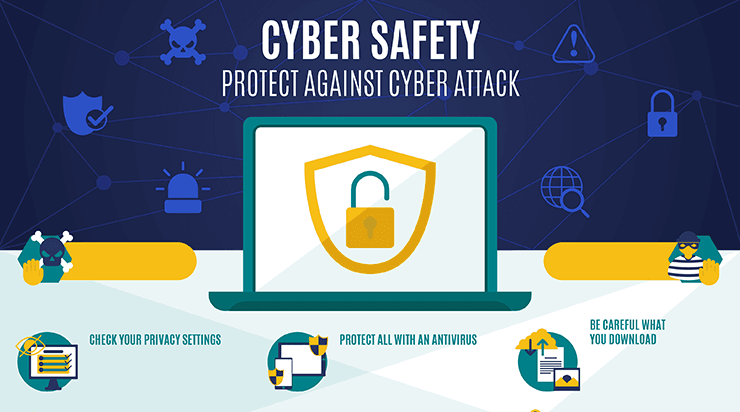The Role of VA and PT in Preventing Cyberattacks
In today’s digital world, where hackers seem to lurk around every corner, keeping your systems safe isn’t just smart—it’s essential. We’ve all heard those scary stories about massive data breaches that cost companies millions and ruin reputations overnight. But what if I told you there are proactive ways to stay one step ahead? That’s where Vulnerability Assessment (VA) and Penetration Testing (PT) come into play. These aren’t just buzzwords; they’re powerful tools that help spot weaknesses before the bad guys do.
In this post, I’ll break down what VA and PT mean, how they differ, and most importantly, their crucial role in fending off cyberattacks. Whether you’re a business owner, IT pro, or just curious about cybersecurity, I’ll keep things straightforward and packed with real insights.
What is Vulnerability Assessment (VA)?
You’re checking your house for cracks in the walls or leaky pipes before a storm hits. That’s what a Vulnerability Assessment does for your digital setup. VA is all about systematically scanning your networks, systems, and apps to find potential security holes, misconfigurations, or outdated software that could be exploited.
It’s not about breaking in—it’s more like a health checkup. Tools and automated scans hunt for known vulnerabilities, like those listed in public databases (think CVE lists). The goal? To identify risks early, so you can address them promptly. According to experts, VA provides a broad overview, helping organizations prioritize what needs fixing without diving too deep into exploitation.
For instance, if your server is running an old version of software with a known bug, VA flags it right away. It’s quick, cost-effective, and can be done regularly to keep things in check.

What is Penetration Testing (PT)?
Now, if VA is the checkup, Penetration Testing is like hiring a friendly burglar to try and break into your house (with permission, of course!). PT takes things further by simulating real-world attacks. Ethical hackers, or “pen testers,” use the same tricks cybercriminals might phishing attempts, SQL injections, or even social engineering to see if they can breach your defences.
The process involves planning, scanning, gaining access, maintaining that access, and then reporting on what went wrong. It’s hands-on and reveals not just vulnerabilities but how exploitable they are in a live scenario. This is super useful for understanding the real impact, like whether a flaw could lead to data theft or system takeover.
PT isn’t a standard tool, as there are types like black-box (no prior knowledge), white-box (full access to code), and grey-box (a mix). It’s more intensive than VA and often done less frequently, but boy, does it uncover hidden threats!
Key Differences Between VA and PT
Confused about how these two fit together? You’re not alone. While both aim to boost security, they approach it differently. Here’s a quick comparison table to make it crystal clear:
| Aspect | Vulnerability Assessment (VA) | Penetration Testing (PT) |
| Focus | Identifying and listing potential vulnerabilities | Simulating attacks to exploit vulnerabilities |
| Method | Mostly automated scans and tools | Manual and automated, with ethical hacking techniques |
| Depth | Surface-level detection without exploitation | In-depth, tries to breach and assess damage |
| Frequency | Regular (monthly or quarterly) | Periodic (annually or after major changes) |
| Cost | Lower, quicker to perform | Higher, more time-intensive |
| Outcome | Report of risks and priorities | Detailed exploit paths and remediation steps |
As you can see, VA is great for ongoing monitoring, while PT digs deeper to mimic actual threats. Together, they’re often combined in what’s called VAPT (Vulnerability Assessment and Penetration Testing) for a full-picture defense.

How VA and PT Help Prevent Cyber Attacks
So, why bother with all this? Simple: Prevention beats cure, especially in cybersecurity. Cyber attacks like ransomware or data breaches often start with unpatched vulnerabilities—think of the WannaCry outbreak that exploited a known Windows flaw.
VA shines by catching these issues early. It scans for weaknesses across your entire infrastructure, from cloud services to employee devices, and ranks them by severity. This lets you fix high-risk problems first, shrinking your attack surface before hackers even notice.
PT takes it up a notch by testing your defences under fire. It reveals how an attacker might chain multiple vulnerabilities together for a bigger breach. For example, in preventing ransomware, PT can simulate how malware spreads, helping you strengthen firewalls or access controls.
By regularly using both, organizations can stay ahead of evolving threats. New vulnerabilities pop up daily—over 20,000 were reported last year alone, so proactive testing ensures you’re not caught off guard.
Benefits of Implementing VA and PT
Investing in VA and PT isn’t just about compliance (though it helps with regs like GDPR or HIPAA); it’s about real-world protection. Here are some top perks:
- Reduced Risk
- Cost Savings
- Improved Compliance
- Better Awareness
- Confidence Boost
Studies show that companies using continuous assessments see fewer incidents. Plus, in our AI-driven era at Dlan.ai, integrating these with machine learning tools can automate even more, making security smarter.

Wrapping It Up
In the end, VA and PT are your frontline warriors against cyber attacks. By identifying vulnerabilities and testing exploits, they empower you to build a resilient digital fortress. At Dlan.ai, we’re all about leveraging tech to make life easier and safer, so if you’re looking to amp up your security game, start with these fundamentals.
What do you think? Have you tried VA or PT in your setup? Drop a comment below—I’d love to hear your stories. Stay safe out there, and check back for more tips!








